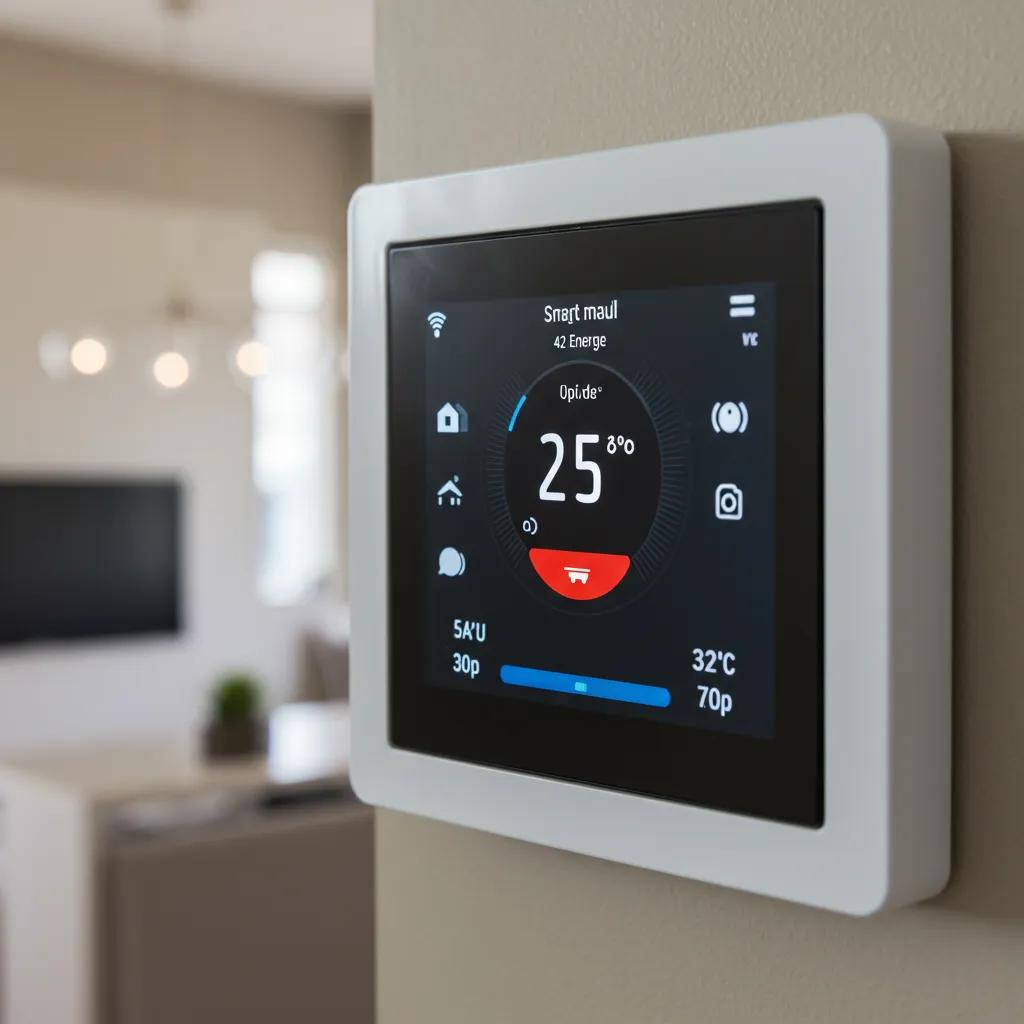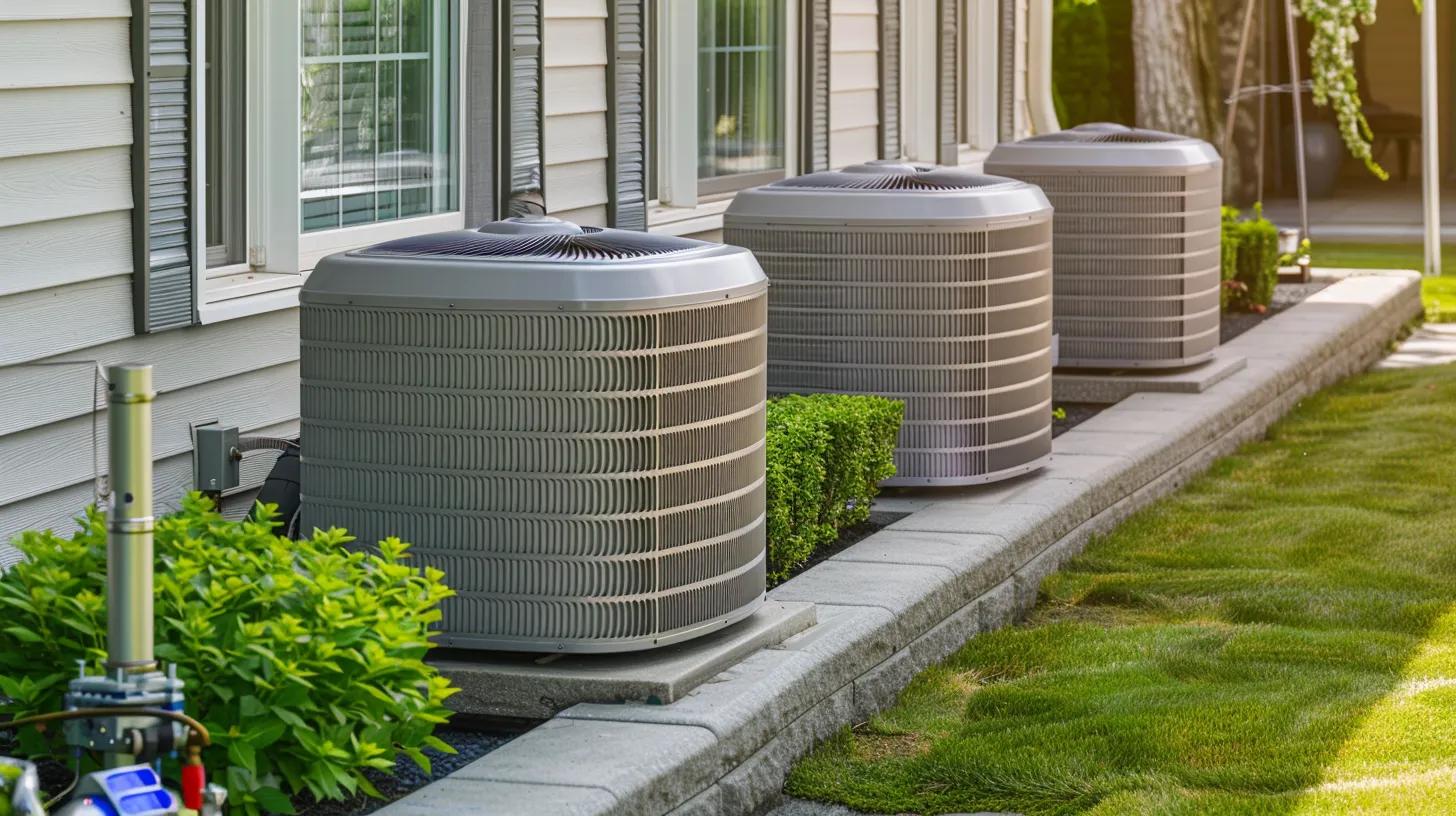High Efficiency HVAC Systems: Your Complete Guide to Energy Efficient Heating and Cooling
High efficiency HVAC systems represent the pinnacle of modern climate control, delivering precise temperature regulation with minimal energy waste. By leveraging advanced measurement metrics such as SEER, AFUE, and HSPF alongside variable-speed technology and smart controls, these systems promise lower utility bills, improved indoor air quality, and a smaller carbon footprint. In this guide, you will discover what defines a high efficiency system, explore its benefits, review the main equipment types, understand Energy Star criteria, examine smart thermostats and zoning, navigate professional installation and maintenance, and assess heat pump performance. Throughout, Tom’s Heating & Air Conditioning’s expertise in Energy Efficiency Services, Heat Pumps, and Thermostats is woven in to illustrate how local homeowners in the Arkansas River Valley can achieve sustainable comfort. Whether you seek factual insights or a partner to install and maintain your next system, this article unifies definitions, applications, technologies, and practical advice under one roof.
What Defines a High Efficiency HVAC System?
A high efficiency HVAC system is one that converts electricity or fuel into heating or cooling output at a rate significantly above industry baseline standards, reducing energy consumption while maintaining comfort. This efficiency stems from optimized heat exchange, precise inverter-driven compressors, and intelligent controls that match output to real-time demand. Such systems maximize Seasonal Energy Efficiency Ratio (SEER), Annual Fuel Utilization Efficiency (AFUE), and Heating Seasonal Performance Factor (HSPF) ratings to ensure cost savings and environmental sustainability. Recognizing these core metrics is the first step toward energy efficiency services that balances performance with operational economy.
Before examining how each rating works, the following table summarizes the principal efficiency metrics and their significance:
| Rating | Application | Efficiency Threshold |
|---|---|---|
| SEER | Air conditioning and heat pumps | ≥ 14 SEER for cooling |
| AFUE | Gas and oil furnaces | ≥ 80 percent combustion |
| HSPF | Heat pump heating performance | ≥ 7.5 HSPF |
These thresholds define systems that deliver superior energy savings, setting the stage for deeper insights into each metric and how they differ from standard equipment.
What are the key efficiency ratings like SEER, AFUE, and HSPF?
SEER measures cooling output divided by energy input over a typical season, indicating how economically an air conditioner or heat pump operates when cooling. AFUE gauges the percentage of fuel converted to heat in a furnace, reflecting combustion performance and wasted exhaust energy. HSPF assesses a heat pump’s heating output relative to energy use during colder months, quantifying its winter efficiency. Higher values in each metric directly translate to lower energy consumption and reduced utility costs. Understanding these ratings empowers homeowners to compare models quantitatively and predict long-term savings.
How do high SEER HVAC units differ from standard systems?
High SEER units employ variable-speed compressors and multi-stage operation to modulate output rather than cycle on and off, maintaining consistent temperatures with less electrical demand. Standard systems typically operate at a single speed, causing frequent starts and stops that waste energy. Variable-capacity operation also reduces humidity levels more effectively, enhancing comfort. This combination of modulation and precision results in quieter performance, extended component life, and up to 30 percent lower cooling bills compared with baseline equipment. These differences underscore why SEER ratings above 14 are viewed as high efficiency.
Which technologies make HVAC systems energy efficient?
Energy-saving HVAC technologies include inverter-driven compressors that adjust motor speed to match load, variable-speed blowers that optimize airflow, and electronically commutated motors (ECMs) for efficient fan operation. Smart thermostats integrate AI and occupancy sensing to pre-condition spaces only when needed, while zoning systems isolate unused areas from conditioned airflow. Eco-friendly refrigerants with low global warming potential support regulatory compliance and performance. Together, these technologies create a dynamic system that constantly fine-tunes itself for maximum efficiency and minimal energy waste, providing a foundation for the benefits explored next.
What Are the Benefits of Energy Efficient HVAC Systems?
High efficiency HVAC systems deliver multiple advantages that extend beyond lower energy expenses. By using less power for the same heating and cooling output, they reduce monthly utility bills and free up budget for other priorities. Improved temperature control and reduced cycling enhance comfort, while integrated air filtration and balanced humidity levels boost indoor air quality. Environmentally, these systems lower greenhouse gas emissions and support sustainability goals through optimized refrigerant selection and reduced energy demand. The combination of economic, comfort, and environmental gains makes high efficiency a compelling investment for modern homes and businesses.
How do energy efficient HVAC systems reduce utility bills?
Energy efficient systems minimize on/off cycling through variable-speed compressors and modulating heat exchangers, delivering just the right amount of heating or cooling when required. This precision prevents energy spikes associated with repeated start-ups and keeps electrical draw steady. Upgrading from a 13 SEER unit to a 14 SEER model can cut cooling expenses by up to 10 percent annually, based on typical seasonal usage patterns. Predictive controls and occupancy sensors further trim runtime by adapting to actual demand, directly translating to consistent monthly savings without sacrificing comfort.
In what ways do high efficiency systems improve indoor air quality?
High efficiency equipment often incorporates advanced filtration media and UV-C light modules that neutralize airborne pathogens, dust, and allergens. Variable-speed blowers maintain continuous low-speed airflow, ensuring that air passes more frequently through filters and purification systems. Precise humidity control prevents mold growth and limits dust mite proliferation, supporting respiratory health. These mechanisms collaborate to create a cleaner environment that aligns with today’s indoor air quality standards and enhances occupant well-being.
How do these systems contribute to environmental sustainability?
By achieving higher SEER, AFUE, and HSPF values, efficient HVAC units consume less electricity or fuel per unit of comfort delivered, reducing carbon dioxide emissions associated with power generation and combustion. The adoption of low-GWP refrigerants and compliance with emerging regulations further lessen environmental impact. In regions like the Arkansas River Valley, cutting energy demand eases local grid strain and supports community sustainability initiatives. Over the equipment lifecycle, these systems demonstrate a marked reduction in ecological footprint, aligning home comfort with global climate objectives.
What Types of High Efficiency HVAC Systems Are Available?
A range of high efficiency configurations caters to diverse installation scenarios and performance goals. Air-source heat pumps offer reversible heating and cooling using ambient air, while geothermal systems tap stable ground temperatures for even greater efficiency. Ductless mini-splits provide zone-specific conditioning without central ductwork, eliminating losses from duct leaks. Variable-speed air conditioners and furnaces adapt output to load, maximizing part-load efficiency. Each system type brings unique strengths—whether geothermally driven long-term savings, zoned comfort control, or retrofit versatility—so understanding their operation helps match technology to need.
How do heat pumps enhance heating and cooling efficiency?
Heat pumps transfer thermal energy rather than generating it, moving heat from the air or ground into a building in winter and reversing the cycle for cooling in summer. Air-source models can achieve up to 300 percent heating efficiency under moderate conditions by using one unit of electricity to move three units of heat. Geothermal heat pumps harness constant subsurface temperatures, sustaining 400 percent or higher efficiency and delivering the lowest operating costs among HVAC options. This transfer-based approach yields dramatic energy savings and year-round comfort.
What are the advantages of variable-speed air conditioners and furnaces?
Variable-speed units adjust compressor and blower motor speeds to match real-time load, promoting continuous operation at reduced capacity for most of the cycle. This modulation improves dehumidification, reduces temperature swings, and minimizes noise compared with single-stage equipment. Extended run times at lower speeds distribute heat or cool air more evenly, lowering peak energy draw and extending component lifespan. As a result, households experience both enhanced comfort and maintenance intervals stretched by up to 50 percent.
How do ductless mini-split systems work for energy savings?
Ductless mini-splits combine an outdoor compressor with one or more indoor air-handling units, operating independently in each zone. By avoiding duct losses—often 20–30 percent of energy in central systems—they deliver nearly all generated comfort to occupied spaces. Zoned controls allow unused rooms to remain off, further trimming runtime. High SEER and HSPF ratings of modern mini-splits often exceed 20 and 10 respectively, making them one of the most efficient solutions for additions, retrofits, and multi-family upgrades.
How Does Energy Star Certification Impact HVAC Efficiency?
Energy Star certification sets a recognized benchmark for equipment meeting or exceeding government-backed efficiency standards, providing shoppers with an easy way to identify high-performance models. Certified systems undergo rigorous testing to verify they deliver rated SEER, AFUE, and HSPF values under controlled conditions. The Environmental Protection Agency’s involvement ensures trust and consistency, and many local rebate programs and financing options hinge on Energy Star status. Choosing certified units thus aligns consumer confidence, regulatory compliance, and financial incentives in one selection.
What criteria must HVAC systems meet for Energy Star certification?
To earn Energy Star status, air conditioners and heat pumps must achieve SEER ratings well above industry minimums—often 15 SEER or higher—and maintain high part-load performance as measured by SEER2 metrics. Furnaces must demonstrate AFUE of at least 95 percent in most regions. Heat pumps also face HSPF thresholds above 8.5. Manufacturers submit equipment for independent laboratory testing to confirm performance claims. Certification criteria are updated periodically to reflect technological advances and sharpen efficiency targets.
Why choose Energy Star certified HVAC products?
Energy Star certified products guarantee robust efficiency, ensuring that buyers invest in systems designed for long-term energy savings and lower operating costs. Certification provides verified performance data, reducing uncertainty in model comparisons. Many utilities and governments provide rebates and tax credits exclusively for certified equipment, further shortening payback periods. In addition, Energy Star’s endorsement signals commitment to environmental stewardship, reinforcing both residential and commercial sustainability goals.
How does the EPA support energy efficient HVAC adoption?
The Environmental Protection Agency promotes efficiency through public education campaigns, rebate and tax-incentive programs, and technical guidance for installers and homeowners. By updating certification criteria, the EPA encourages manufacturers to innovate and adopt low-GWP refrigerants. Its ENERGY STAR Partners network fosters training, quality installation standards, and community outreach. This multi-faceted support strengthens market adoption of efficient systems and helps local contractors—such as Tom’s Heating & Air Conditioning—guide customers toward the best solutions.
How Do Smart Thermostats and HVAC Controls Improve Efficiency?

Smart thermostats and advanced control systems leverage real-time data, occupancy sensing, and remote access to optimize system operation. By learning user habits, integrating weather forecasts, and adjusting setpoints dynamically, they can cut energy use by up to 20 percent while maintaining comfort. Zoning management further refines temperature control by isolating conditioned areas. In addition to energy savings, these intelligent controls provide performance monitoring, alert homeowners to maintenance needs, and can integrate with home automation platforms for seamless comfort management.
What features do smart thermostats offer for energy savings?
Smart thermostats use machine learning to predict occupancy patterns and adapt schedules without manual programming. They incorporate geofencing to detect when residents leave or return, automatically shifting to energy-saving modes. Integration with weather data enables pre-cooling or pre-heating during off-peak hours, reducing peak-rate consumption. Clear in-app dashboards display energy usage trends and suggest optimization tips. These features combine to yield measurable reductions in heating and cooling bills.
How do zoning systems optimize heating and cooling?
Zoning systems divide a property into independent climate zones controlled by separate dampers and thermostats. This architecture ensures that only occupied or priority areas receive conditioned airflow, eliminating waste in seldom-used spaces. Individual thermostats maintain precise setpoints based on occupancy and usage patterns. By balancing airflow dynamically, zoning reduces overall system runtime, cuts duct losses, and enhances comfort consistency from room to room.
Can smart controls reduce HVAC maintenance needs?
Yes, smart controls continuously monitor system performance metrics—such as compressor run times, refrigerant pressures, and airflow rates—and issue alerts when anomalies arise. Early detection of filter blockages or refrigerant leaks enables preventive service before major failures. Detailed usage logs help technicians diagnose issues faster, reducing repair time and cost. Over time, proactive maintenance informed by analytics extends equipment life and sustains optimal efficiency.
What Should You Know About High Efficiency HVAC Installation and Maintenance?
Professional installation ensures that high efficiency systems deliver rated performance and longevity. Proper refrigerant charge, duct sizing, and airflow calibration are critical to achieving advertised SEER, AFUE, and HSPF values. Likewise, routine maintenance—such as filter changes, coil cleaning, and performance tuning—preserves efficiency gains and prevents energy-draining faults. Financing options and rebate programs further lower the barrier to adoption, making high efficiency upgrades more accessible to homeowners and businesses alike.
Why is professional installation critical for high efficiency systems?
High efficiency equipment is engineered to tight tolerances that demand precise refrigerant charging, ductwork balancing, and airflow configuration. Incorrect installation can slash efficiency by up to 30 percent, negating potential savings. Certified installers follow manufacturer guidelines and local codes, use calibrated tools, and perform airflow measurements to confirm optimal operation. Professional expertise from a trusted provider like Tom’s Heating & Air Conditioning ensures reliable performance, peak efficiency, and valid warranty coverage.
How often should high efficiency HVAC systems be maintained?
For systems to retain peak energy performance, owners should schedule professional tune-ups at least twice a year—once before the cooling season and once before heating. Quarterly filter inspections and cleanings are recommended for high usage or households with pets and allergies. Seasonal maintenance includes coil cleaning, refrigerant level checks, and combustion safety tests. Adhering to this schedule safeguards efficiency, extends equipment life, and prevents unexpected breakdowns.
What financing options are available for energy efficient HVAC upgrades?
Many homeowners qualify for low-interest financing plans, utility rebates, and even government tax credits when installing Energy Star certified equipment. Manufacturers and local contractors often partner to offer promotional rates or deferred payment plans. Tom’s Heating & Air Conditioning provides tailored financing solutions alongside site-specific incentives, ensuring that investment in a high efficiency system becomes a feasible step toward long-term savings and comfort improvement.
Conclusion
Investing in high efficiency HVAC systems not only results in substantial energy savings but also significantly improves indoor air quality and overall comfort. By understanding the advantages of advanced technologies and energy ratings, homeowners can make informed choices that align with their sustainability objectives. Discover our selection of Energy Star certified products to find the ideal solution for your home. Start your journey towards a more efficient and comfortable living environment today.



